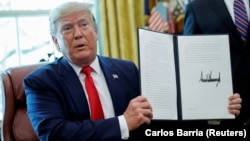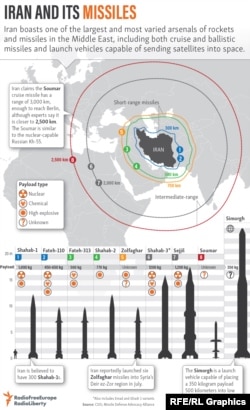There seems to be some confusion about current U.S. policy towards Iran. Indeed, some insist that there is no consistency in the policy, or there are contradictions in the policy—or even that there is no U.S. Iran policy at all.
I disagree.
There is no question in my mind that the White House has a definite policy toward Iran. It is based on a desire to achieve certain objectives that support American interests and international peace and stability using specific means.
As is well known, the current administration is deeply concerned about Iran’s international behavior. Indeed, Secretary of State Mike Pompeo enumerated the Trump administration’s concerns about Iran a little over a year ago.
As a result, it has implemented a policy of “maximum pressure” to effect changes in the regime’s conduct. But while applying political, economic and military pressure on Iran, Washington has left the diplomatic door open for talks with Tehran.
Iran has been unwilling to take the United States up on that offer so far.
Iran insists it is not pursuing a nuclear weapons program and considers the 2015 nuclear deal as a binding international agreement that the U.S. is a signatory of.
However, many of the key U.S. concerns revolve around the 2015 Joint Comprehensive Plan of Action (JCPOA). The Trump administration left the JCPOA in 2018, feeling that the agreement was inadequate on nuclear and missile matters.
For instance, the United States wants Iran to provide the International Atomic Energy Agency (IAEA) with a full accounting of the work it did on its secret nuclear weapons program. Absent that, effective verification is much more difficult.
There is also a concern that the JCPOA cannot be fully verified if suspect sites cannot be inspected at will, especially if military and Islamic Revolutionary Guard Corps bases are off-limits to IAEA inspectors.
Tehran must also end its current and or future production of fissile materials such as enriched uranium and plutonium that could be used in nuclear weapons.
Washington is also troubled by Tehran’s missile programs, which Iran insists is for defensive purposes in relation to heavily armed countries in the region, such as Saudi Arabia.
Iran currently has the largest missile arsenal in the Middle East and its development of nuclear-capable missiles which U.S. believes violates U.N. Security Council Resolution 2231. Washington’s European allies have also voiced concern over Iran’s missile program. Washington also wants Tehran to stop providing missiles to terror and other groups.
The United States is calling upon Iran to release American citizens held there and to stop supporting foreign terrorist organizations such as Hamas, Hezbollah and Palestinian Islamic Jihad and Iraqi Shiite popular mobilization units.
The United States wants Iran to cease arming the Houthi rebels in Yemen, withdraw its forces from Syria, terminate support for the Taliban in Afghanistan and to stop providing safe haven for al Qaeda operatives in Iran.
And so on.
That list—which doesn’t include everything that Secretary Pompeo laid out—is quite comprehensive in outlining U.S. concerns about specific Iranian policies at home and abroad that affect U.S. interests.
These grievances against Tehran also provide a clear justification for the United States to use its instruments of national power to protect its interests from Iran’s ongoing, belligerent and destabilizing behavior.
Indeed, the maximum pressure policy is having an effect.
For example, the Iranian economy is suffering: the rial has fallen fourfold in 18 months on Tehran’s open market; inflation is running 40 percent; unemployment is hitting 15 percent; oil exports are the lowest in decades; and, the economy is expected to contract 6 percent in 2019.
Tehran, of course, is working to counter Washington’s policies, including provocations such as downing U.S. drones and exceeding low-enriched uranium stockpiles that are limited under the JCPOA.
To achieve its objectives, the United States will clearly have to adjust its means and methods as events unfold with Iran; existing plans and policies must sometimes be altered—and quickly—to address breaking or unexpected events.
Policymaking is nothing if not a dynamic exercise.
Of course, even small adjustments to the strategy and tactics of a certain policy could lead to well-intentioned—or otherwise—criticisms from observers. This is not at all uncommon and can add to a healthy policy debate in an open society.
It is fair for someone to say that they do not like the United States’ current policy toward Iran or that it has flaws; they are also free to suggest their own approach. But to say there is no policy or direction for dealing with Iran is simply not the case.









